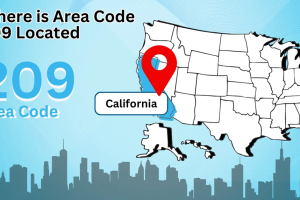Content Attributes
With a registered design you can protect the external appearance of an analog or digital product. Your business idea, which is implemented in the form of a product, can thus be protected from imitators and theft of ideas. We show you how to register a logo design, what the design protection includes, and which requirements must be met for protection.
A specialized lawyer will also be happy to help you with the registration of the design.
1. What is a registered design?
Furniture, cars, or toys – these are all three-dimensional objects with a design that can be protected, just like product packaging, for example. Two-dimensional patterns such as fabrics, fonts, or logos can also be protected using protection copyrights.
What can be protected with design protection?
With design protection, the entire appearance of a product can be protected. The scope of protection concerns:
- Contours and lines
- Surface structure and materials
- Shape
- Coloring
Words and text elements, graphics, or sounds cannot be protected as a design because they do not adequately capture the external appearance of a product. For instance, you need to explain to a logo designer what you need in logo. A trademark application is better suited for this.
Examples of designs
- Coca Cola bottle
- Controller of a PlayStation console
- Clog shoes with their holes
- Brita water filter
What rights does a registered design give me?
A registered design grants the owner the exclusive right to manufacture, use and sell the protected design (absolute blocking effect). So you can take action against any design that resembles the registered design – the overall impression is particularly important here.
It is forbidden for third parties to use, manufacture, market, offer or even own your registered design without permission (within the framework of a license). One example of this is counterfeit handbags, which are already prohibited from possession. It doesn’t matter whether the manufacturer or buyer knows the original design.
2. Protection requirements
For the design to be protected, two basic conditions must be met:
- New: no identical design may be registered.
- Individuality: The overall impression of the design must differ from known designs.
In this context, the term grace period is important. Design protection can be applied for up to one year after the design has been published for the first time without the “novelty” factor being endangered. In this way, market success can be assessed without registering the design directly.
Relative and absolute barriers to refusal
While design protection may not be excluded by law, some designs are generally excluded from protection according to Section 33 Paragraph 1 (absolute) and Paragraph 2 (relative obstacles to protection).
| Absolute barriers to refusal | Relative barriers to refusal |
| Incompatible with public order and morality | Design is solely determined by its technical function |
| Improper use of state emblems or other symbols of public interest | The shape and dimensions of the product must replicate the main product (“must-fit”, such as iPhone charging cables or spare parts) |
3. Apply for design protection: basics
You can submit the application to register your logo design in writing directly to the United States Patent and Trademark Office (USPTO). The design can also be registered electronically. This procedure is recommended because not only does it eliminate the need to go to the office, but also frequent errors in the design application.
The input mask asks for all the necessary data and brings them into the required format. After receipt of the electronic design application, you will receive the relevant file number.
Multiple registrations
In addition to the individual application, you can submit multiple applications with up to 100 samples for the protection of the design. The condition for the right to your registered logo design is that the samples have at least one common class of goods. In comparison to individual registrations, bundled registrations are cheaper.
Documents required for registration
The application with which you can apply for design protection must contain some information and documents. The following information and documents are required to protect the design:
- Application for registration of the design (to help you fill in)
- A reproduction of the design suitable for publication.
- Indication of articles or classes of the product in which your design is to be incorporated or on which it will be used.
Reproduction of a design
If you would like to register logo design, it is essential to consider the mandatory graphic representation of this. This can either be glued to the playback sheet, printed, or submitted as a JPEG file on an electronic data carrier (CD/DVD). Certain requirements must be observed here:
- Views: Graphical representation from different perspectives. Both static and (digital) 3D images are permitted.
- Background: The design must stand out clearly from the background.
- Colors: The representation in color or in black and white is permitted.
In addition, no explanatory text or symbols may be used in the rendering of the design.
Term of protection
The sole right to use the design is reserved for you by registering it with the USPTO for a period of five years with the option of extending it up to a total of 25 years. In addition to the one-time registration fee for protection, maintenance fees are due with each renewal for the registered logo design.
Foreign or exhibition priority
The period of protection usually begins with the receipt of the design application at the USPTO. However, the term of protection can also be brought forward if a so-called priority is claimed from a previous foreign design application or from a previous exhibition.
If you have already registered the design abroad, the following information must be added to your USPTO design application in order to be able to claim the foreign priority: Date, country, file number, and a copy of the previous application.
If you have shown the design at a domestic or foreign exhibition, you can claim an exhibition priority from the day of the exhibition. For this, the design application must be made within six months of the first exhibition. It is important that the exhibition was published in the Federal Gazette.
4. Publication & Extension
After registration, the addition of your registered design will be published in the design sheet (formerly the design sheet).
If you do not want this because you want to keep the design secret for the time being or you want to wait and see whether the product is accepted by the market, you have the option of postponing the publication of your design for up to 30 months.
Postponement of the announcement
If you do not want to make your design known at first, the USPTO enables a so-called extension – postponing the publication. To do this, you must submit a corresponding application. An extension can be useful in the following situations:
- Confidentiality
- Test phase with several designs on the market
- Design protection before the launch
Scope and duration of protection in the event of an extension
Compared to the regularly published design, the term of protection for an unpublished design is only 30 months instead of five years. The key date is the day of registration – only the announcement (“disclosure”) is postponed to a certain date.
The scope of protection is also limited in the case of an extension: there is protection against copying for applicants who were (verifiably) aware of your design. Coincidental parallel creations, which are registered independently, are excluded from the protection against copying.
Before the shortened term of protection expires, you can either decide to let the property rights expire or take full advantage of the design protection. You simply pay the extension fee and your design protection is extended to five years.
Conclusion
Once you’ve created a design, protect it too. Although there are a few things to consider when it comes to design protection, such as relative/absolute obstacles to protection or various supplementary sheets that have to be completed when registering, the effort is still worth it. A registered design has an absolute blocking effect and anyone is prohibited from using the design.
A good example is the battle between the chocolate brands Ritter Sport and Milka. Milka has been trying for years to challenge the registered logo design of Ritter Sports, which is the square packaging. With several chocolate brands in a square format, Ritter Sport would lose its recognition value. But the judgment of the BGH awarded Ritter Sport its right to the square, which is protected by design protection.
We generally recommend advice on the subject of design protection from a lawyer. They will answer all your questions about the registered logo design, help you with the registration, and research in advance whether there are already any similar or even identical designs.
A lawyer also helps if someone violates your existing design protection or, conversely, you violate an industrial property right. In order to prepare the conversation with the lawyer, we have prepared a useful leaflet on industrial property rights.
Frequently Asked Questions
Anything that defines the external appearance of a product (digital or analog) can be protected as a registered design, for example:
Contours and lines
Shape
Surface structure and materials
Coloring
A single design can be registered for 60 (electronic registration) or 70 (paper form) dollars. With multiple registrations, you can save another 25 to 50 percent of the individual price.
If you don’t postpone the publication of your registered design, it is initially protected for five years. This protection for your design can be maintained a maximum of four times up to a maximum of 25 years.
Your registered design can also be protected if it is not registered. The regulation of the unregistered design and the protection through publication to the public apply. This can be done through a specific product, an exhibition, or a publication in advertising. The protection for this unregistered design is then limited, however, since it is only protected against imitations and, unlike the registered design, the protection is limited to three years.
A design can be registered if it is new, i.e. no identical design has already been registered, and if it has a certain peculiarity – the overall impression of the design must stand out from already known designs.
When registering a design, a reproduction sheet must be filled out on which (or on a CD/DVD) a graphic representation of the design can be seen. Above all, a representation from different perspectives is important here, and the design stands out from the background. The representation is permitted both in color and in black and white.
Depending on whether your application contains errors or any obstacles to the protection that make registration more difficult, the time it takes to register a design can vary. If you register your design online, if all documents are available and correctly filled out and if there are no obstacles to protection, the registration can be completed within a few days.
In principle, you can register your design yourself. You need a lawyer in any case if your company is based abroad.
Design protection begins on the filing date of the design – provided there are no grounds for refusal or formal errors.



